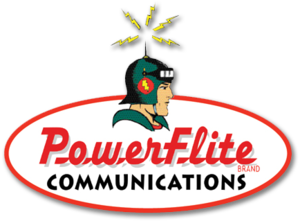Do a Lot of Large Companies Advertise Their Brand Instead of Their Product? If So, Why?
/The short answer to this is, “Yes!” It is literally called Brand Advertising. Yes, many companies absolutely do focus their ads on promoting their corporate brand instead of individual products, and in most cases they should. Why?
Most large companies create and/or sell multiple products. Those products may all be related, and may even be focused around one core product, or they can be a range of very different products. They can be physical products, like different types of canned fruit, or they can be a service-related product, like mutual funds. What these products all have in common, however, is that they all come from one corporate brand name, so by promoting that one brand name aggressively, the company imbues its entire line of separate products with the perception of possessing the same quality – accuracy, toughness, innovation, flavor, or whatever the brand is known for – even though the amount of those qualities each product possesses will typically vary.
For example, the Apple corporation often promotes the Apple brand as innovative, stylish, high quality, popular, and slightly exclusive parts of a great lifestyle. That leads people to expect those qualities in ALL Apple products, from iPhones to MacBook Pros and from Apple Watches to Apple TV+ productions. And because they have spent most of their marketing dollars creating their immensely strong brand perception for Apple overall, new products and services they introduce usually sell well almost immediately, which lowers long-term marketing/sales costs while enhancing customer satisfaction.Brand advertising costs less than product advertising. Think about the Colgate brand for a moment. The toothpaste people. Every national ad they put out is either mostly or completely about the Colgate brand, not an individual product. That’s because they know that, when you go to the store, the Colgate name – not the product name – will be one of the first things you see on the dental care aisle. And whatever type of toothpaste you want, Colgate will have an option – known as a sub-brand – there for you. You will also see Colgate mouthwash, Colgate floss, Colgate tooth whiteners, Colgate toothbrushes, and more. So, although they do advertise distinct products via promotions, point-of-sale (POS), dental practices, and narrowly targeted media, their ad dollars go a lot farther by focusing their major ad buys on primarily promoting the Colgate brand, which in turn shies a light on ALL of their individual products.
Brand advertising is essential to Direct-to-Consumer (DTC) brands – Allbirds footwear, Saatva matresses, Harry’s shaving products, Chewy pet supplies, Stitch Fix clothing, Warby Parker eyewear, and more. Many DTC brands launch as start-ups and start-ups need to be ready to alter their product offerings in their first few years as they work to establish a niche following. Focusing on the brand, not the products, in advertising does that.
Brand advertising supports sell-in to distributors and retailers. For large brands to sell their products to consumers, traditionally they first need to sell-in their corporate branding message to and through sales channels. It’s easier to get a retailer to carry your products, for example, if you are Proctor & Gamble or Clorox than it is if you are a small company that few people have ever heard of. That’s a vast generalization, but it’s still true. Thus, although consumer packaged goods (CPG) companies do a lot of marketing of their individual consumer products, in business-to-business venues, they are at least as likely to promote their corporate brand first in the hope that more and faster broad recognition will get them a chance to sell-in their branded product lines.
Most large companies are public companies, so by advertising their brand more than their individual products, they also support their stock price. This is a good practice overall, of course, but also helps protect the company during times when one of their products starts to lag in popularity or has a crisis. For example, a packaged foods company could have a product that is popular for years, then loses marketshare because societal tastes change or there is a “health scare” in the industry – even if that specific product isn’t involved. By consistently supporting the corporate brand, the company can survive a hit to one of its product brands until it can re-formulate, make some other shift to the brand, or shut it down and put resources into a different product.
___________________
There are also times and places when a company may want to focus its ads and other resources on products rather than on a core brand name. This is especially true if the corporate brand is already strong and positive enough to give its product lines a beneficial “glow.” But advertising your brand always has more benefits than liabilities.

